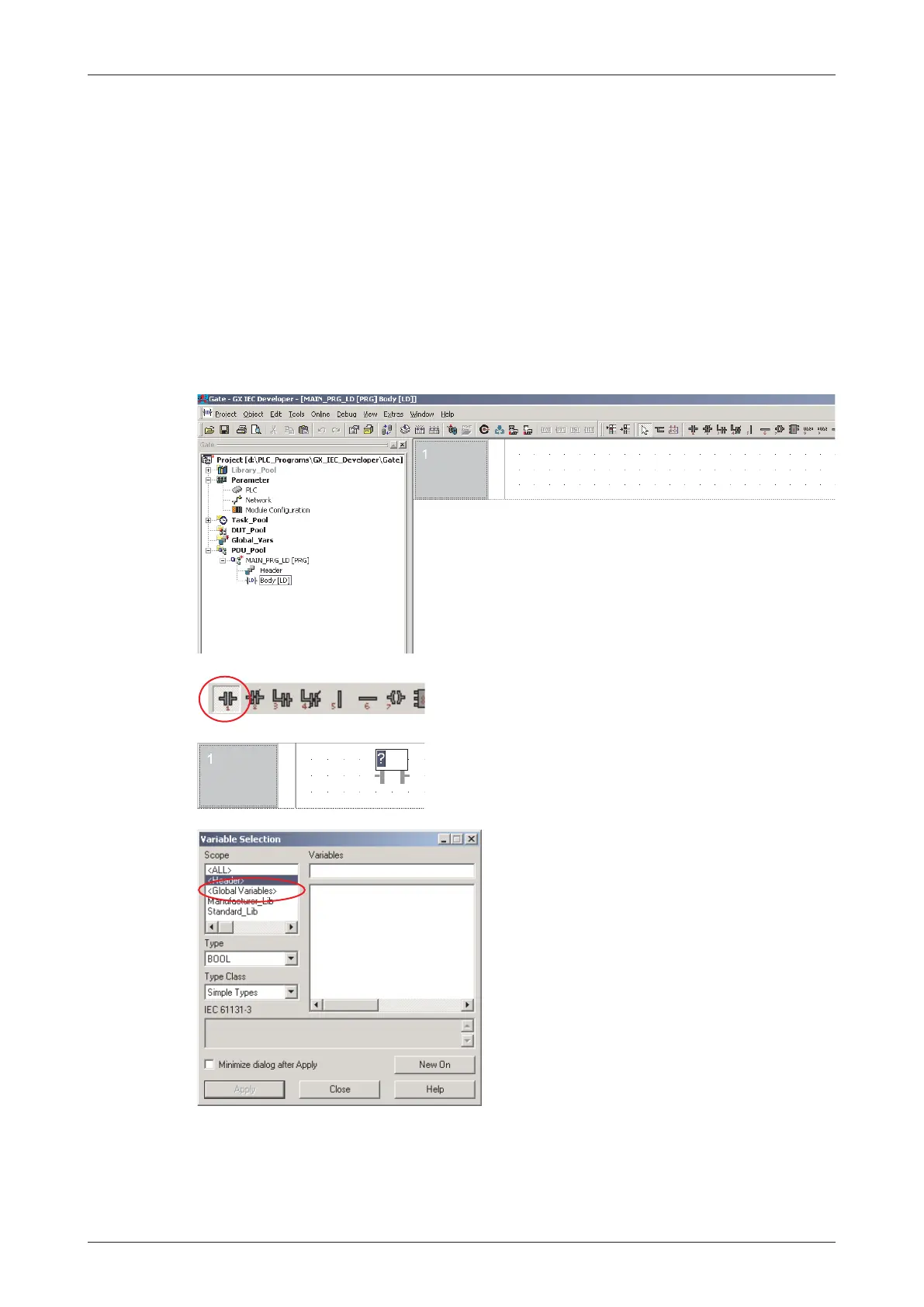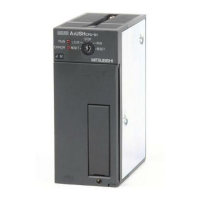Entering of the Program
Next you can program the individual control tasks:
쎲
Operation of the rolling shutter gate with the pushbuttons
The program must convert the input signals for the operation of the gate into two commands for
the drive motor: “Open Gate” and “Close Gate”. Since these are signals from pushbuttons that
are only available briefly at the inputs they need to be stored.To do this we use two variables to
represent the inputs in the program and set and reset them as required:
–
OPEN_GATE
–
CLOSE_GATE
When the body of the POU MAIN is not already displayed double-click on
Body [LD]
in the Pro
-
ject Navigator.
MELSEC System Q Beginners Manual 4 – 39
An Introduction to Programming Programming PLC Applications
Select the ‘Normally Open’ contact from the toolbar.
Move the mouse pointer over the work area and click to fix
the drop position on the window.
Right click on the question mark to call up the
Variables Selection
window.
Click on
Global Variables
in the
Scope
dialogue
area.

